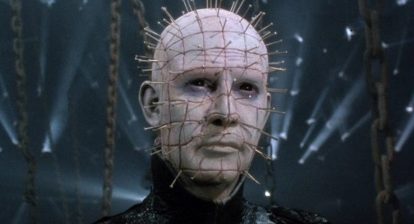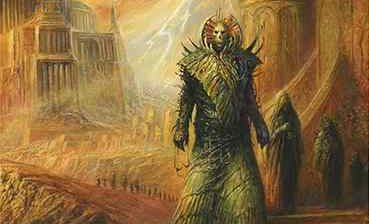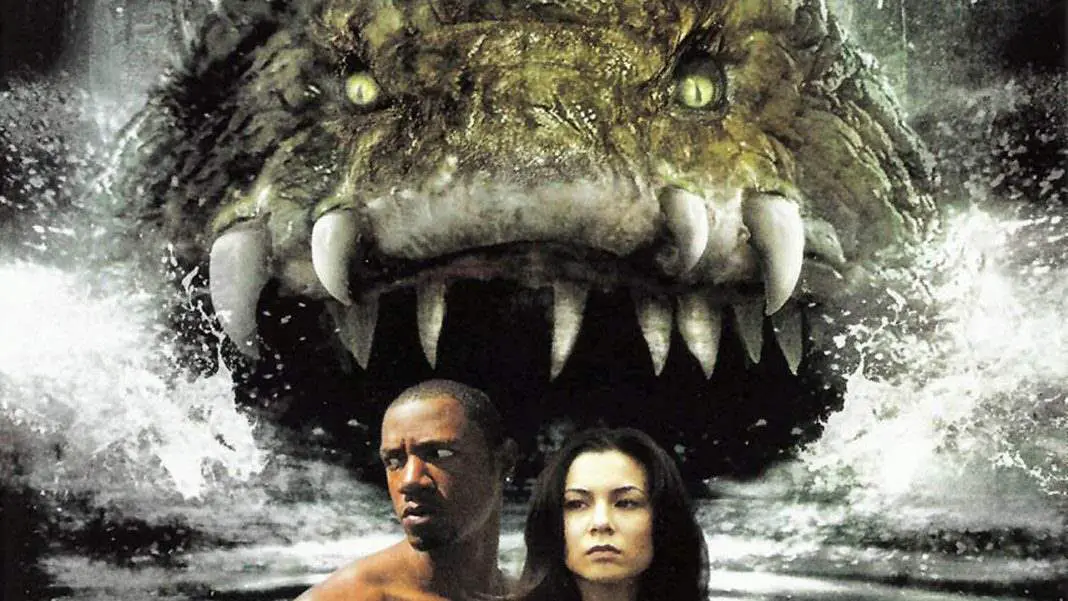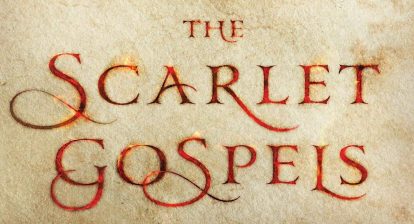In the beginning, there was the Old Testament where God spent his time asking prophets to sacrifice their children, obliterating cities, and drowning all of humanity but one family. After there was the New Testament, where Jesus preached the Golden Rule and loving thy neighbor. It was a bit of a tonal shift. In 2013, Clive Barker’s Next Testament shifted it back.
The graphic novel, co-written by Barker and Mark Alan Miller, opens with billionaire jerk Julian Demond uncovering a mysterious pyramid. When he sledge hammers it open, a mysterious being comes out. It’s humanoid in form, but staggeringly tall compared to the already large Julian. It’s skin is rainbow colored. The way it stands—straight-backed, looming—calls back to Watchmen’s Dr. Manhattan. This character introduces itself: “I am Wick, the father of colors. I am the Lord your God.”

This book, which will no doubt make conservative Christians angry, is an imagining of what the God from the Old Testament would do if he were reawakened into this world. None of it is pretty. Wick is furious with the state of the world, complaining that, “I’ve been gone for two-thousand years, and should be met by a stronger, smarter race. But all I see are indolent, self-entitled cutthroat worms. This decay is so far gone, I’m wasting my breath… It’s time to go back to the old way.” From there, he gets violent.
It’s perfect, because it’s leaning into one of horror legend Barker’s strengths. The man has the gift for gore. Better yet, Next Testament artist Haemi Jang has the talent to capture those moments on the page. Along with amazing character design work on Wick, Jang does excellent work with exploding heads, crashing planes, and slit throats, bringing Barker’s vision to life (or death).
One of Barker’s other strengths is the way he plays with the cosmic from Hellraiser to here in Next Testament. Barker and Miller try to dig into Wick’s psychology, having people ask questions like, “What… you’re like… magic n’ s***, right? Just… laser [your own monument] up… y’know… build it. S’easy for you. Why should we do it?” Though they have him repeatedly referred to as a “sociopath” (which he can’t be, because he’s not human), Barker and Miller bring a realism to the character’s impulsivity that challenges readers to think critically about religion.
It’s fascinating, as are Wick’s parallel counterpoints, Elspeth and Julian’s son Tristan. They’re engaged and when Wick spots them as Julian’s dinner party in the first issue, he’s amazed that they “genuinely love each other.” The couple escapes the blood-soaked banquet and begin a trip to a religious library in Rhode Island that will occupy them for the next ten issues.
Philosophically, this subplot works very well. The book raises hard questions by juxtaposing romantic love with religious love. Which is more valuable, more important? What does each mean to the world as a whole? But in terms of storytelling, it falls flat. Next Testament has a Godzilla problem.
Viewers pack into theaters to see the giant monster tear down the city, but if that’s all that happened, most kaiju movies would last about fifteen minutes. The solution in most Godzilla movies is an added subplot, normally featuring a reporter or a scientist who knows that Godzilla is coming. They can’t really doing anything about Godzilla’s impending arrival, but the movies are feature length because of the padding.
Barker and Miller do the same thing with Tristan and Elspeth. The lovers can’t do anything to Wick. He’s a cosmic being. They’re corporeal ones. So instead, they go on a road trip where they face some obstacles, but not anything that Wick has planned specifically for them. None of it feels integral to the story, or half as interesting as Wick leveling a city, starting an orgy, or licking the heroin out of a junkie’s arm. The problem continues through the end of graphic novel, where Tristan and Elspeth are reduced to watching a final confrontation after a minuscule contribution.
Related: Repulsive Beauty: The Attraction to Monsters in the Films of Clive Barker
That end, without our heroes Tristan and Elspeth making an impact, feels anti-climactic. For a better riff on the same thing, check out Barker’s seminal classic Hellraiser. The Cenobites are infinitely more powerful than Kirstie, but she found a clever way for her to best them instead of a literal deus ex machina.
This omnibus collection features a cover gallery, Haemi Jang’s sketchbook, introductions by Doug Jones and Liam Sharp, and closing essays by Victor LaValle, Rodrigo Gudiño, Thomas F. Monteleone, and Jonathon Maberry.
Wicked Rating – 8/10
Next Testament will be released by Boom! Studios on August 28, 2019.






